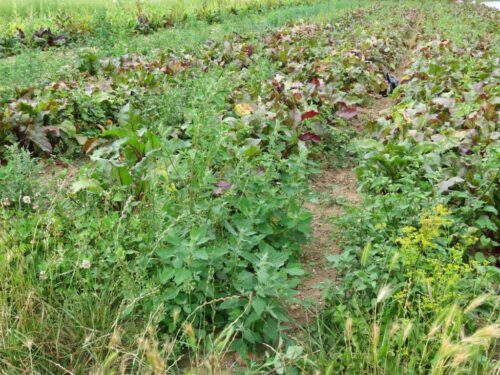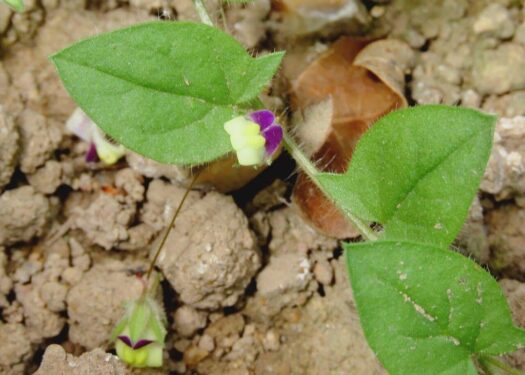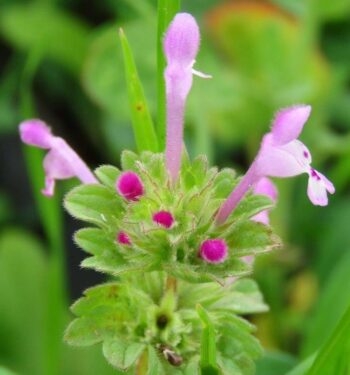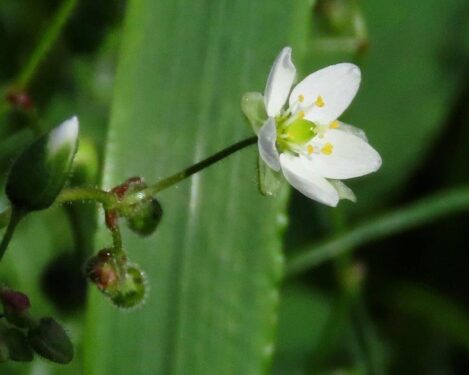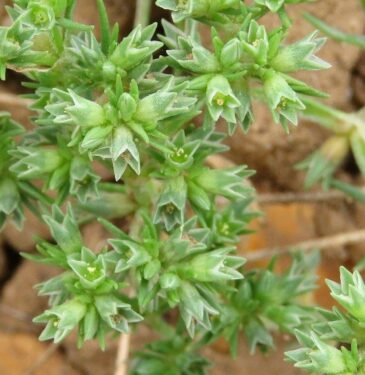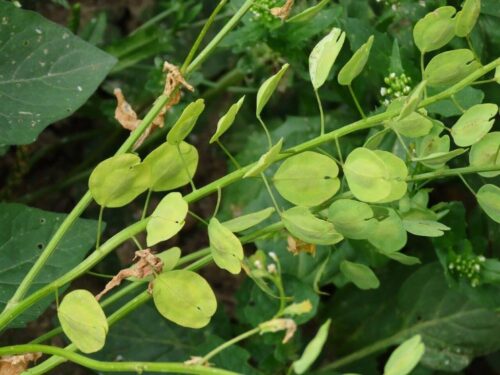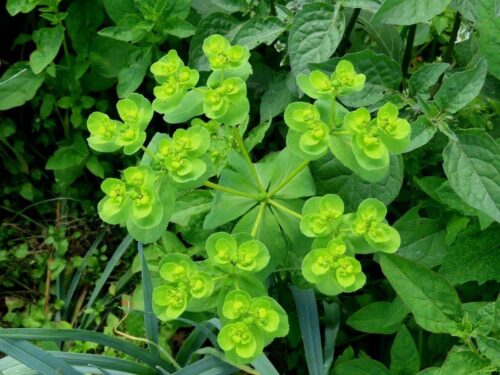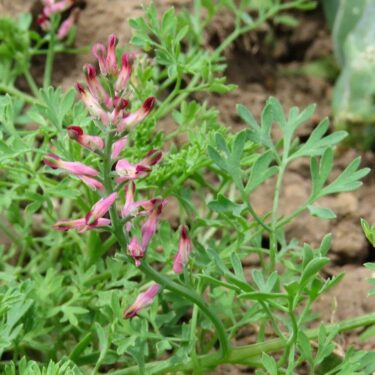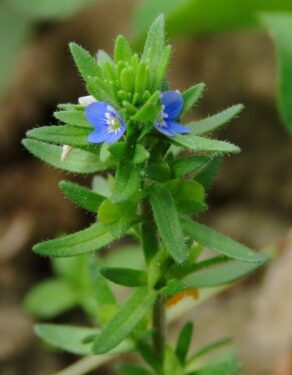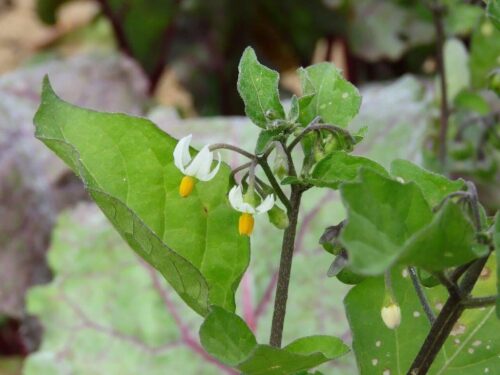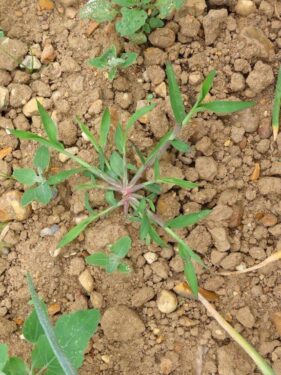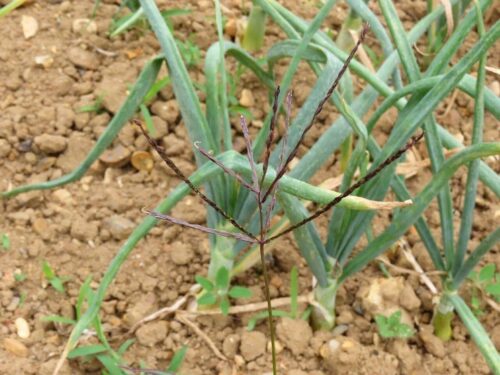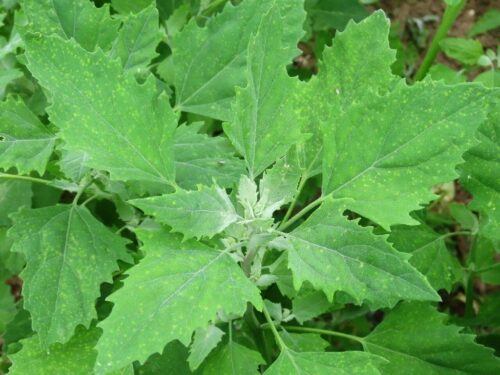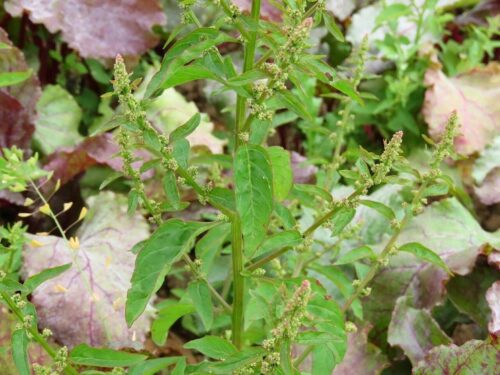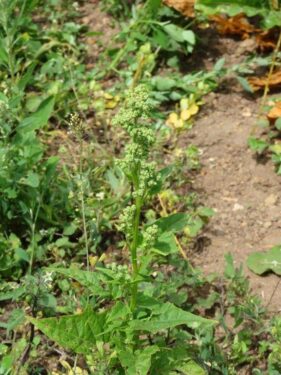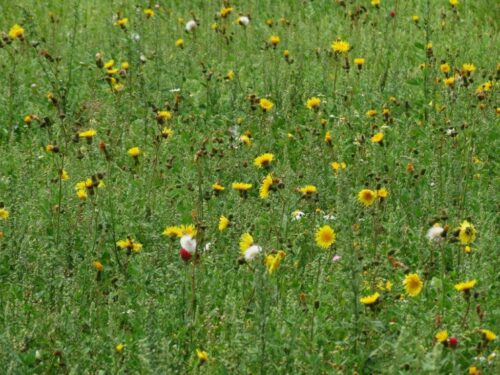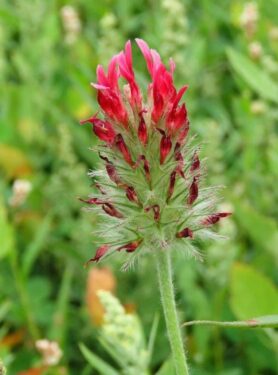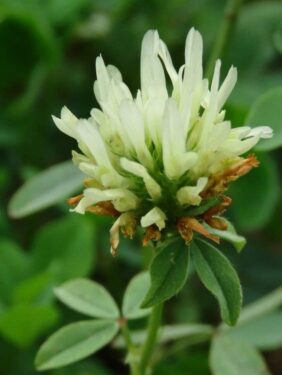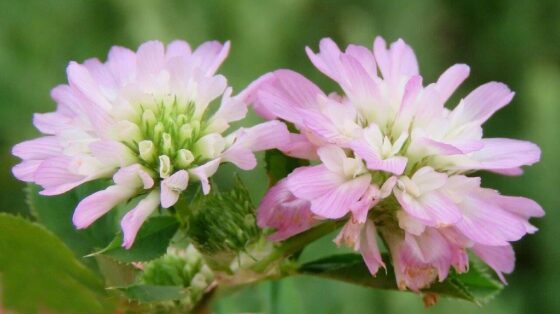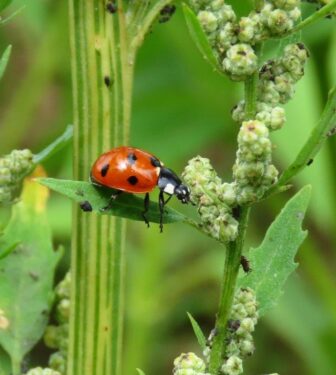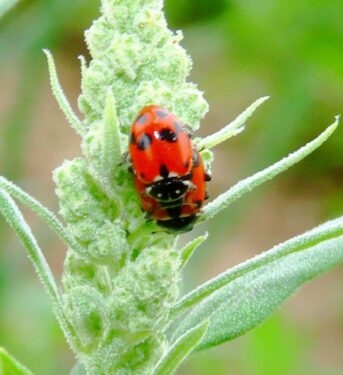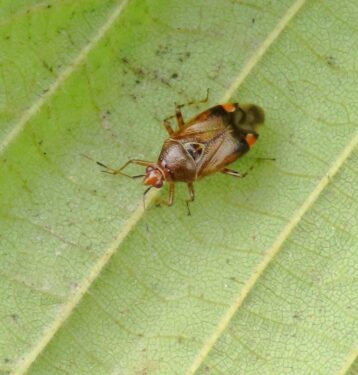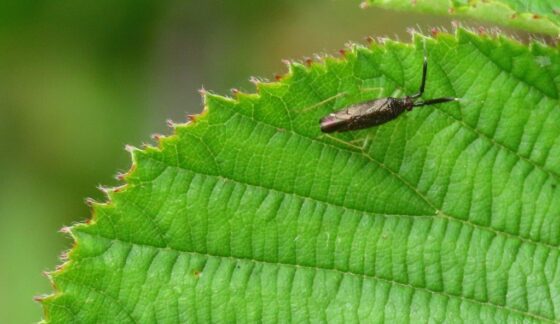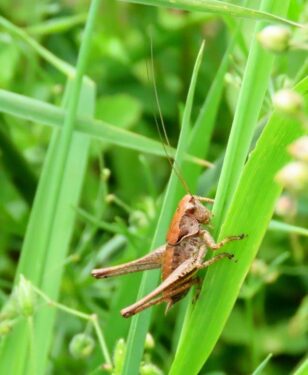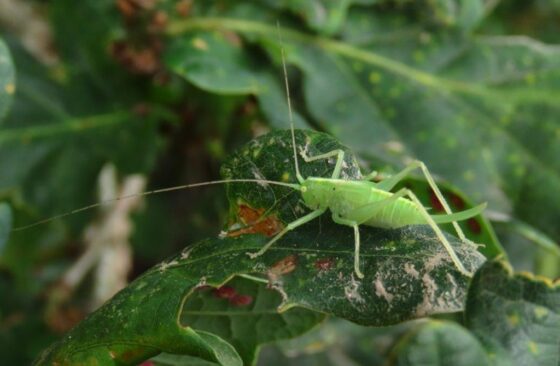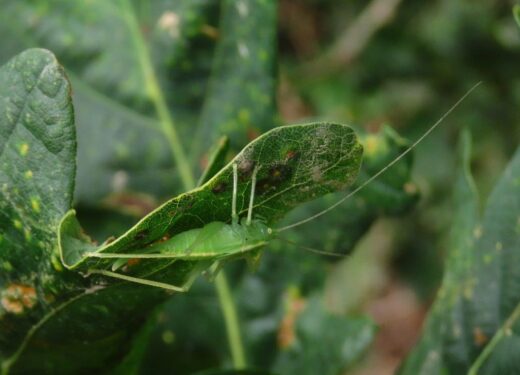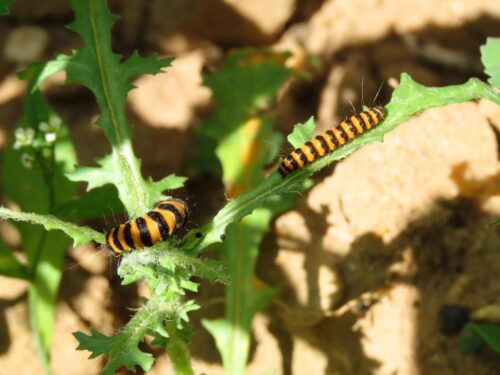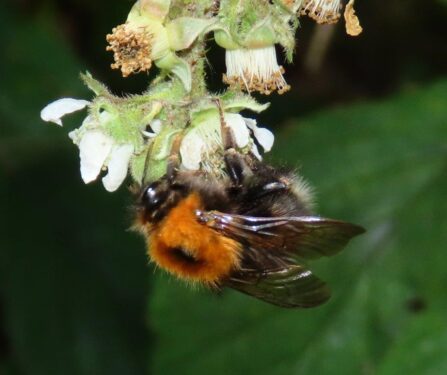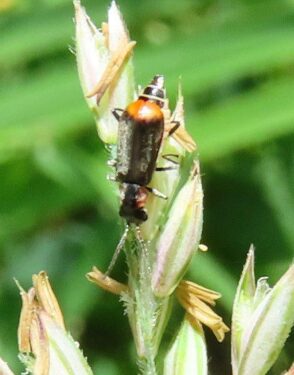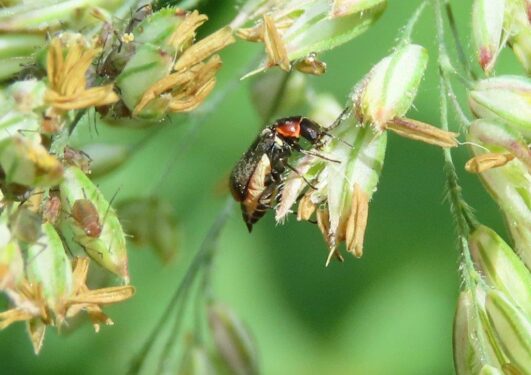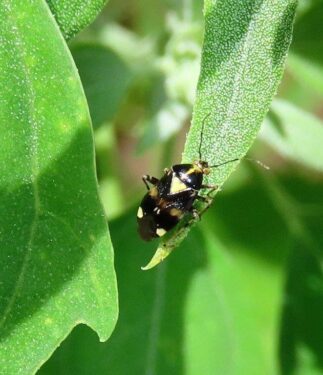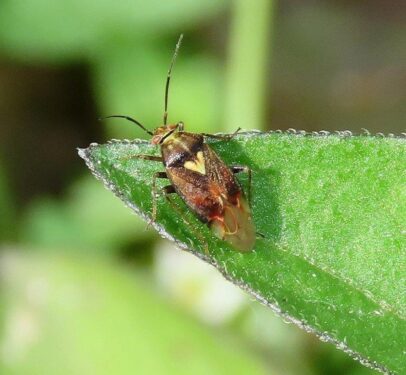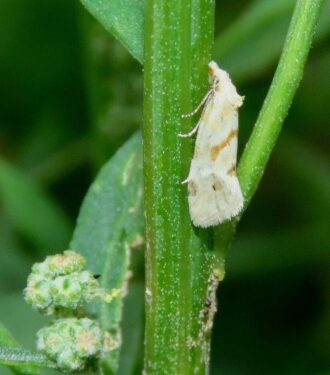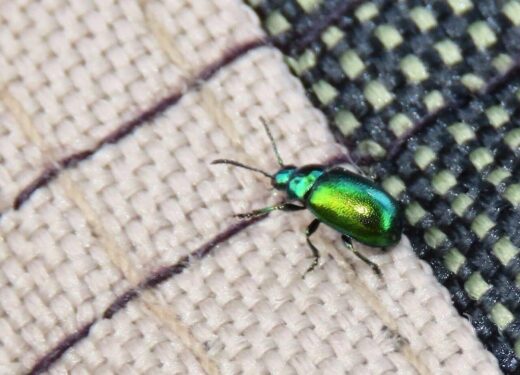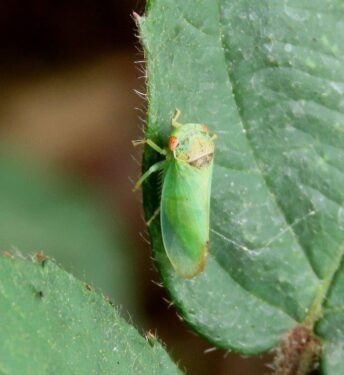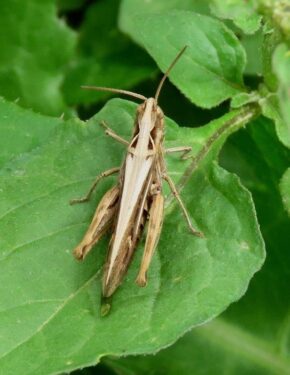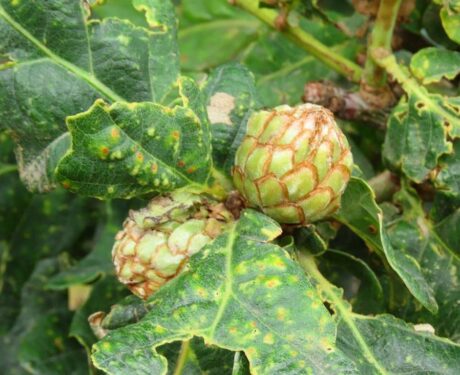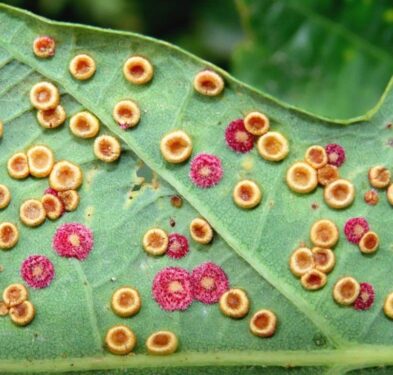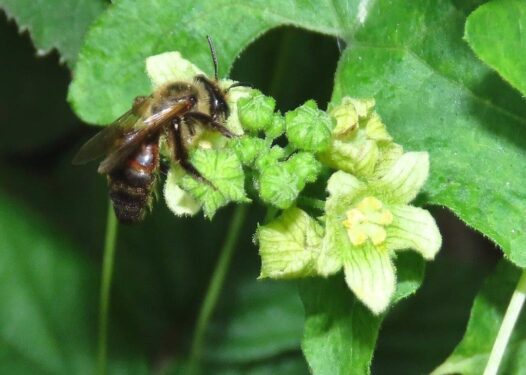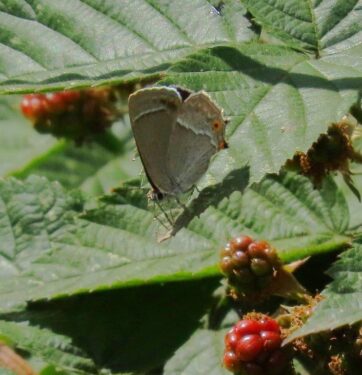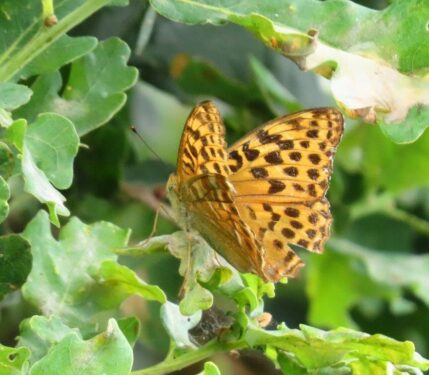One of the many delights of life in Wivenhoe is the presence of a weekly vegetable bag scheme, produce that is both local (with lower carbon footprint than most supermarket veg) and healthy (being organic, and thus lacking in pesticide residues). The vegetables come from Bennison Farm bennisonfarm.co.uk in Thorrington, and we were recently given access to the farm with WildSmiths wildsmiths.co.uk to look at its natural features. Greg and Sarah Smith have been volunteers on the farm, and realised at first hand the wildlife riches it contains, testament to the nature of the horticultural system used.
First and foremost, the cultivated ground of Bennison’s, while evidently productive, is full of ‘arable plants’, the sort of things we used to know as ‘weeds’ but which we have now come to value for their scarcity, following their loss from conventional intensive cultivation systems. An organic system is without artificial inputs: in the absence of toxic herbicides, necessary weed control is done through a combination of tractor-mounted steerage hoe, flame weeders and lots of back-breaking manual labour! But the combination of these can never, thankfully, achieve their wholesale eradication.
And so we were able to enjoy long-forgotten scenes of all sorts of arable plant growing among the intended crops: Greg has already found more than 90 species (click here for list), including several local rarities, such as Sharp-leaved Fluellen, Henbit Dead-nettle, Corn Spurrey, Annual Knawel and Field Pennycress:
The scarcer ones were mixed with the more frequent, but still declining, Sun Spurge, Fumitory, Wall Speedwell and Black Nightshade:
Plants such as Fumitory encapsulate neatly why these species matter. They were once so familiar and numerous that a drift of the flowers looked like smoke arising from the earth, the eponymous fumus terrae. What’s more, their 20th Century near-eradication through the over-use of herbicides (poisons) within crops (destined to become our food) also removed its seeds from the landscape: the favoured food of Turtle Doves, the distillation in sound and beauty of our summer…and very likely a national extinction which will be recorded during the next decade.
Some arable plants are genuinely native species, ones which have transitioned from naturally dynamic habitats such as river shingles and mountain screes into the human-disturbed farmlands and gardens. Others have arrived here over the millennia of agriculture and horticulture, often arising in the Middle East or Mediterranean areas, followers in the footsteps of cultivation. And plants are still arriving with us: Hairy Finger-grass has only relatively recently become a feature of horticulture in the UK, probably as a contaminant in crop seed sources, or perhaps as a bird-seed alien:
A good number of the arable plants are in the spinach family, typically with green, unassuming flowers, and consequently often difficult to identify. Half-a-dozen species of these Oraches and Goosefoots were found as we walked, and undoubtedly others will be present. What they lack in floriferousness, make up for in their oil-rich seeds, much loved by seed-eating birds. Examples shown are Fat-hen, Many-seeded Goosefoot and Maple-leaved Goosefoot:
A final suite of interesting plants are (presumably) derived from seeds sown to create green manure crops to maintain soil fertility. Particularly notable among these are clovers – dramatic long-flowered Crimson Clover, pale yellow Sulphur Clover and pink Reversed Clover, the flowers rotated through 180 degrees, so the flowerhead looks as though it has been squashed underfoot:
All these so-called weeds are both interesting in their own right, but also valuable in that they help to support useful invertebrates – ‘useful’ as predators or herbivores of potential pest species, or as pollinators, upon whose activities so many crop plants rely. Ladybirds are a classic example of useful predators, of aphids, and the fields were teeming with them, mostly the common 7-Spots, but also the rather more unusual Adonis Ladybird:
Other at least partially predatory insects included the bugs Deraeocoris flavilinea (a relatively new arrival in Britain) and Heterotoma planicornis (with flattened antennal segments and apple-green legs); Dark Bush-cricket and Oak Bush-cricket. While these are more associated with the surrounding hedges, the presence and maintenance of such good margins undoubtedly helps cast a benign influence on the holding as a whole:
Useful herbivores too – caterpillars of the Cinnabar Moth are renowned for feeding with impunity on toxic Ragwort. Here however, they are feeding upon the related Groundsel, a very common plant of disturbed areas which can limit crop productivity if it gets out of hand. What better than yellow-and-black ‘volunteers’ to help weed it out!
In the same category of natural herbicides could also come the Small Copper butterflies which have been seen egg-laying on the docks are appearing as weeds in the crops. As their sole larval food plant, herbivory in such cases must be having a postive impact.
And then of course pollinators – bees, such as the Tree Bumblebee below, are particularly renowned for this but many other insects play their part too, from hoverflies to beetles. Onesuch, the small malachite beetle Axinotarsus marginalis, a known pollinator, was interesting as it is another recent colonist of Britain, and previously unknown to us.
Of course there was also a vast range of other invertebrates, ones that cannot be argued as directly beneficial to the farm, but the sum total of which gives credence to the idea of organic cultivation as ecological farming, treating the land as an ecosystem to be nurtured and treasure:
Whether common or rare, all are important in the web of life. But it is always exciting to find the scarcities. Only a couple of weeks ago, Sarah found a Pied Shield-bug, for which the Essex Field Club distribution map shows only one other location in the Tendring Peninsula. Likewise, exactly the same comment can be made for the Bryony Bee we photographed on the boundary with Hockley Wood, except that as well as its local scarcity (see map here), it is considered to be nationally rare.
All of the above, and we have hardly even mentioned the showiest of them all, the butterflies, a kaleidoscope of biodiversity weaving their confetti magic throughout the farm: browns, whites, Peacocks and Red Admirals, together with neighbouring woodland specialities – Purple Hairstreak and Silver-washed Fritillary:
Just 3.5 hectares provides more than 150 weekly veg shares, and keeps wildlife and the environment happy. At a time when food standards are at huge risk from the pressures of predatory US producers, with considerably lower, barrel-bottom-scraping standards on pesticide residues and suchlike waiting in the wings following Brexit, we must treasure, support and safeguard those like Bennison Farm that maintain our and the planet’s health.
